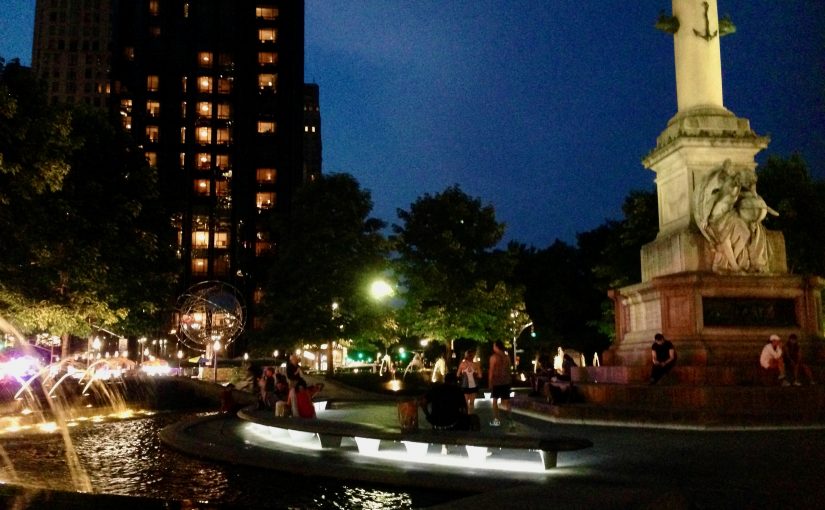In January, 1996, I auditioned a play I was directing for the still quite young Metropolitan Playhouse of New York. When the creative team went into the theatre the weather was chill, skies were clear, and there was some snow in the forecast. When we came out four hours later, there was two feet of fluffy white spread out across the city, and it was still falling. The weekend that followed was among the most memorable I’ve spent.
All but essential traffic was banned. New Yorkers were cross country skiing up and down the avenues and were walking right down the middle of the streets. Central Park was filled with people until the wee hours, building snowmen, sledding on the hills, tramping the meadows in snow shoes. Everyone I came in contact with was smiling, said hello, enthused about the utter transformation the City had so suddenly undergone.
The overriding factor for us all was the stunning absence of cars. Oh, they were still there, but buried under several feet of snow, and even were they to be dug out, they weren’t allowed to go anywhere. The cityscape was for people, first of all and rightly so. New York is one of the great walking cities of the world. That weekend it felt like we’d finally gotten it right.
Sunday came. An idea swept through town like a wind. This is great! Why don’t we just close Manhattan to traffic every Sunday? Or at least Midtown. In the moment, it seemed so possible.
Then the snow melted, traffic congestion returned, and we settled down with our memories of the quiet, happy city we had just relinquished, as if nothing had happened, to the automobile. But no one I know ever stopped talking about that glimpse of city life that reflected the nearly eighty-percent of residents who do not own a motor vehicle. I doubt that the conversation was limited to me and my circle of friends.
Surely it wasn’t, because year by year more parts of the city are closed to traffic and made pleasant for pedestrians. If the city of snow was an inspiration on any level, development of the vision took awhile to gestate, but it has clearly taken hold. And while I doubt there is any way to definitively trace this evolution in city planning to that snowstorm of 1996, I have no doubt that it had an effect.
There are stories now abounding about how heavily polluted air in cities across the world has become clean after only a few weeks suspension of human activity; about how wildlife is showing up in places where it has not been seen in years. I’m eager to hear more about this. I want to remember. And I want these phenomena to be a compelling subject of conversation for the next several decades. The Earth can heal if we stop wounding it. Humanity can organize to meet a threat if we can overcome, or even just suspend, our addictive distractions. We are living through a period that shows our virtues and faults in high relief.
I want to remember.
And I want the conversation that follows to be artistic, academic, and philosophical as well as scientific and political. In fact, on a certain level, I want this conversation about what we experienced to dominate our all our discourse for the next quarter of a century, at least. We need to do it. The problems we face are vast, difficult, and unprecedented, but so is the current crisis. An extended conversation about what we remember of it will fuel insight, connect dots, make the possible concrete.
By “conversation” I don’t mean that those New Yorkers who were part of the magical snowbound weekend did nothing but yammer on for twenty years about skiers on Amsterdam Avenue. But those memories informed how many of us, if not most of us, viewed the City from that weekend on. And sufficient numbers later found ourselves in positions to do something about making that vision real, that the snowy weekend did have its impact.
That’s what I want to have happen to our view of the planet and the crisis it faces; that notions are fundamentally altered by these several months we’re living through. We don’t need to have ready solutions for everything (though we may, in fact, already have them), but we do need to go forth from this spring awakening with a memory of more than the horrifying statistics, ill-informed political posturing, and woeful lack of pizza. This is a major public health emergency, that much is obvious. It is also a major universal health opportunity. Let’s allow that opening to flourish well beyond the emergency, and let’s help assure it does by chronicling our experiences, whatever they are, in whatever way we can.
So we remember.
These pages are my two cents. Got change?
